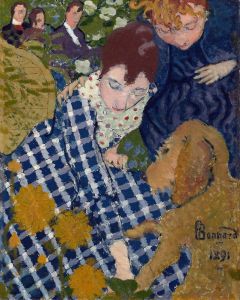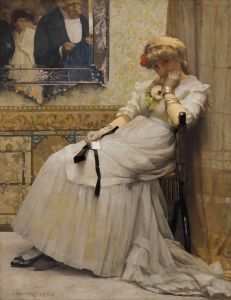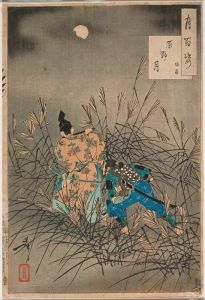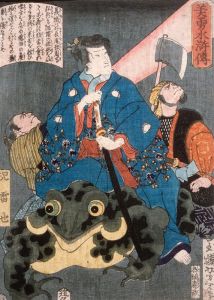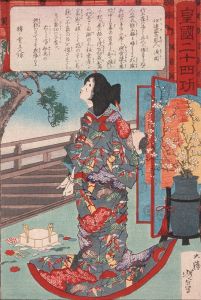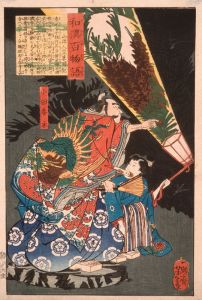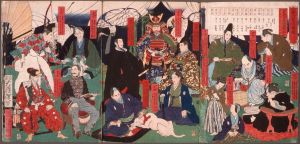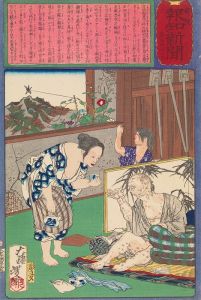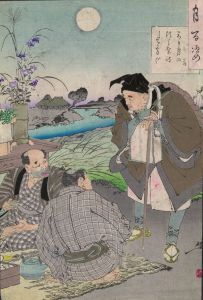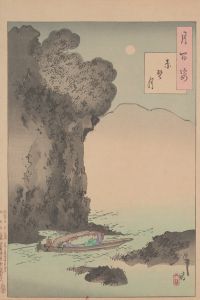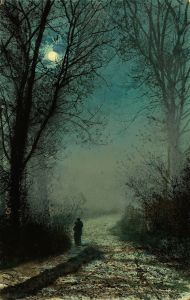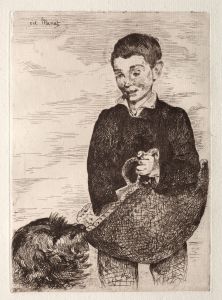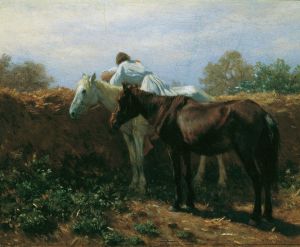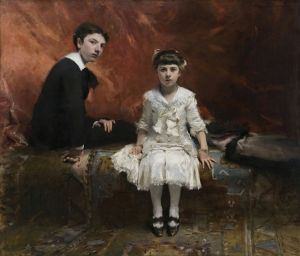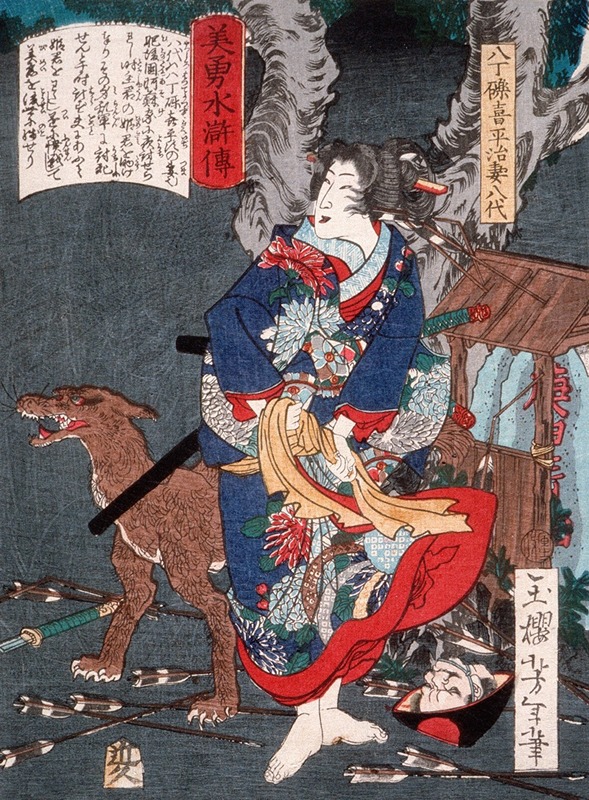
Hatchōtsubute Kiheiji’s Wife Yatsushiro with a Dog
A hand-painted replica of Tsukioka Yoshitoshi’s masterpiece Hatchōtsubute Kiheiji’s Wife Yatsushiro with a Dog, meticulously crafted by professional artists to capture the true essence of the original. Each piece is created with museum-quality canvas and rare mineral pigments, carefully painted by experienced artists with delicate brushstrokes and rich, layered colors to perfectly recreate the texture of the original artwork. Unlike machine-printed reproductions, this hand-painted version brings the painting to life, infused with the artist’s emotions and skill in every stroke. Whether for personal collection or home decoration, it instantly elevates the artistic atmosphere of any space.
Tsukioka Yoshitoshi, a renowned Japanese ukiyo-e artist of the late Edo and early Meiji periods, is celebrated for his innovative and dramatic style, which often depicted historical and mythical themes. One of his works, "Hatchōtsubute Kiheiji’s Wife Yatsushiro with a Dog," exemplifies his unique approach to storytelling through art.
Yoshitoshi was born in 1839 and became a prominent figure in the ukiyo-e genre, which was a popular form of woodblock printing and painting in Japan. His career spanned a period of significant cultural and political change in Japan, as the country transitioned from the Edo period to the Meiji era. This transition influenced Yoshitoshi's work, as he often combined traditional Japanese themes with new artistic techniques and perspectives.
"Hatchōtsubute Kiheiji’s Wife Yatsushiro with a Dog" is part of Yoshitoshi's larger body of work that frequently explored themes from Japanese folklore, history, and kabuki theater. The piece likely draws inspiration from a specific story or play, as was common in Yoshitoshi's oeuvre. His works often featured strong, dramatic characters and vivid imagery, which helped to convey complex narratives and emotions.
In this particular artwork, Yoshitoshi depicts Yatsushiro, the wife of Hatchōtsubute Kiheiji, alongside a dog. The inclusion of animals in Yoshitoshi's work is not uncommon, as they often serve symbolic purposes or help to enhance the storytelling aspect of the piece. Dogs, in Japanese culture, can symbolize loyalty and protection, which might suggest certain attributes of Yatsushiro's character or her relationship with Kiheiji.
Yoshitoshi's style is characterized by bold lines, dynamic compositions, and a keen attention to detail. He was known for his ability to capture the essence of his subjects, whether they were historical figures, legendary heroes, or everyday people. His work often conveyed a sense of movement and drama, drawing viewers into the narrative and evoking a strong emotional response.
Throughout his career, Yoshitoshi faced numerous challenges, including financial difficulties and mental health issues. Despite these struggles, he continued to produce a significant body of work that has left a lasting impact on the world of Japanese art. His contributions to the ukiyo-e genre are highly regarded, and his works are studied and appreciated by art historians and enthusiasts around the world.
"Hatchōtsubute Kiheiji’s Wife Yatsushiro with a Dog" is a testament to Yoshitoshi's skill as an artist and storyteller. It reflects his ability to blend traditional Japanese themes with his own unique artistic vision, creating works that are both visually striking and rich in narrative depth. Today, Yoshitoshi's works are celebrated for their artistic merit and their ability to capture the cultural and historical essence of Japan during a time of great change.





